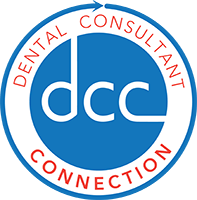The BIG question I continue to hear as I speak with dental clients is, “Do you really think dentists will be required to convert to electronic records in the near future?” Of course, so many practices have made the move, but it looks like it won’t be long for the rest. Christine Taxin is “in-the-know” and enlightens us with her article this week.
Snodent Goes Global! Electronic Records Are Next!
By Christine Taxin, Founder and President of Links2Success
The ADA’s systemized nomenclature of dental codes has been incorporated into the International Health Terminology standards development organization’s SNOMED CT medical code set. The ADA has worked hard and long to set up a licensing agreement between the two groups. This will allow the ADA’s dental diagnostic codes to be set up within the SNOMED CT International Release, which will be available for dental professionals around the world to use. “This agreement will make SNODENT content more widely available for the ultimate benefit of patients and global health,” states Dr. William Calnon, ADA president. SNODENT is the vocabulary used for required certified Electronic Health Records system for the Medicaid and Medicare meaningful use incentive reimbursement program, and will most likely become the clinical terminology required for dentists who use electronic records or who plan on doing so in the future. There have been many changes in what treatments can be provided in our dental practices (State of Mass. require dental offices to administer the flu shot this year), Oral DNA, the use of CT Scans, and extensive medical intakes allows us to determine a medical necessity. Now we have a dental claim form that has an area to place diagnostic codes for faster and more accurate billing. We need to have a set of codes that are utilized within the dental profession, and we will have it soon.
By 2015, when the National Health Information Infrastructure will be operational, a patient’s dental record will no longer travel alone.
Dental records will be included within electronic health records that also include the patients’ entire medical history, pharmacy, vision, laboratory tests and all other clinical information. EHRs will travel from health care provider to health care provider on the NHII, a communications system often described as a network of information highways.
The federal government’s intent is to increase information technology to promote overall quality and cost reduction of the entire health care system. The HHS, under whose purview the NHII falls, defines it as “an initiative set forth to improve the effectiveness, efficiency and overall quality of health and health care in the U.S.”
Electronic health records for patients have to be consistent and they have to speak the same language to get the information across to different types of health care providers. Standards that can make patient information accessible to any health care provider and enable that information to cross practice management and software systems from different vendors are necessary to achieve interoperability.
“Ultimately, and beyond the development of interoperability standards, dentists will be encouraged to acquire the technology necessary to utilize the EHR to share patient information in a secure manner,” observes Dr. Robert Faiella. “This will allow us to have accurate past medical and dental histories, drug profiles and interaction, laboratory results and improve patient safety. It will govern not only our access to vital information, but also change how we are reimbursed by third party carriers, and eventually, may impact the resale value of our practices upon retirement based on technological capability.”
As the evidence of crossover between medical and dental conditions continues to emerge, ADA advocates for members see the electronic health record as essential in determining treatment and evaluating outcomes. As dentistry moves to a system of medically managing oral disease, dentists may find that electronic health records provide valuable data on their patients’ medical conditions, current prescription medicines and potential drug interactions. – American Dental Assosication
For an example, saliva testing is already being used in many states as part of key diagnostics for patient pharmaceutical compliance, substance abuse and disease monitoring. Some electronic patient records include saliva testing and monitoring and plotting of these under the laboratory section of the chart to correlate the results to drug dosages or treatments.
Learn more about Christine Taxin and how she can
Technology in the practice of dentistry within the scope of overall health care, will likely have an expanded code taxonomy—procedural, diagnostic and administrative—as part of our routine practice in an electronic format. – New York University School of Dentistry
The idea of applying standardized code sets—which include diagnostic coding necessary in order to establish a system that can work with a medical system using existing medical code models—that most dentists are not ready to do.
However, we must step forward and protect our positions, lets all work together and become a large part of the medical world. -Dean A.T. Still, University of Arizona School Of Dentistry
Learn more about Christine Taxin and how she can help you increase your practice profitability – https://www.dentalconsultantconnection.com/consultant_bio30.php … Chrisine is a master in medical to dental cross-code billing!

